The double bassist and founder of the ‘How I met Puccini’ project shares the process of condensing rich operatic textures to stringed instruments
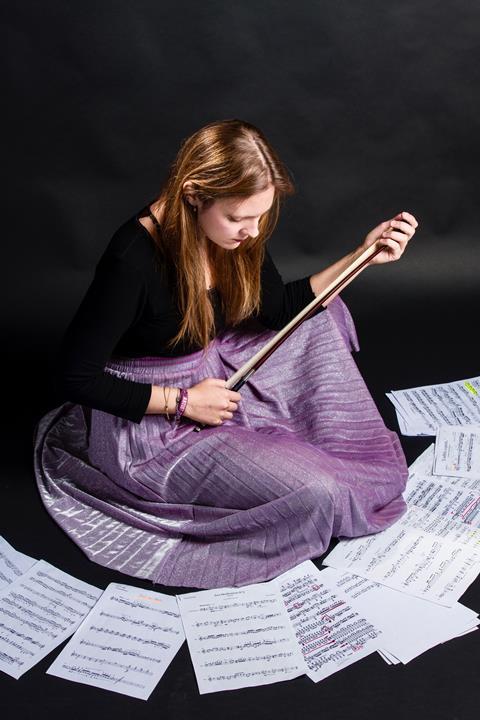
Discover more Featured Stories like this in The Strad Playing Hub
Since 2020 double bassist Valentina Ciardelli has been arranging and orchestrating Giacomo Puccini’s works for various instrumental ensembles, particularly those with string instruments. The double bass is the protagonist of this artistic endeavour, and with her loyal musical companion, Valentina aims to prove that it is possible to recreate Puccini’s orchestral sound with nothing but an instrumental duo.
The double bass brings together the stringed instrument family, its rich palette and its wide spectrum of standard and extended techniques make it an extremely versatile instrument, a real shape-shifter.
In this article I would like to focus on two of the fantasies that were conceived for stringed instruments, one named Sui Cieli Bigi – Fantasia sui temi de ’La Boheme’ for cello and bass and the other is Io riprendo il mio volo e la mia pena – Fantasia sui ’La Rondine’ for two basses.
Transcriptions from orchestras to small ensembles must undergo a delicate operation. The piece must be initially checked to see if it is musically and harmonically strong enough to withstand a transcription process that aims to enhance both the musical content and the instruments that will perform it.
Then it needs a second stage process that involves analysing and choosing the load-bearing lines and colours of the piece, understanding the orchestral balance and how to re-orchestrate everything on the new ensemble or instrument.
It is like translating from one language to another, looking for the translation that is closest to the original and at the same time bringing out the colours of the language in which we are expressing the concept.
The same goes for transcription.
It is very difficult to explain in its entirety the process behind such complex and delicate work, but I hope these brief examples will open a window into this fascinating process.
In the first one, called Io riprendo il mio volo e la mia pena – Fantasia sui ’La Rondine’, we see two double basses exchanging orchestral accompaniments and singing lines. Rondine is a work with a light theme punctuated by waltz rhythm, by the then fashionable American dances (fox-trot, one-step) and anticipating the musical genre with a ’French’ scent remniscent of Ravel’s writing.
In this case, transcribing from orchestra to double bass duo means creating a piece that is faithful to the original, that brings out the qualities and possibilities of the ensemble, that is satisfying for the player and, finally, enjoyable for the audience. I also had to choose which parts of the opera were suitable to create a fantasy that works, that is as complex an operation as is changing keys to use those that favour the 360-degree use of the instrument without undermining the harmonic structure.
For example, the lively opening of ’Rondine’ is transcribed for two double basses by utilising the low register of the second double bass and the medium-high register (using natural harmonics) of the first. This is done to recreate the spectrum of sound and expression achieved with the rich and medium-low register of strings and harp that Puccini chose in contrast to the brightness and high register of the woodwinds. The sextuplets in bar 4 have been removed to emphasise the broader breath of the following phrase, which reintroduces the motif in sextuplets at bar 11.
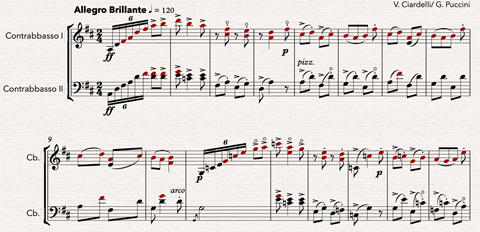

In the orchestra, which has multiple sections to express this contrast, there’s a dense counterpoint. However, in the double bass duo, I opted to emphasise the brass and woodwind line with the light strings, leaving the counterpoint of the fast passages only in the sections that required it. To create a rounder sound, imitating the bassoons and clarinets, the second double bass uses a sonorous pizzicato.
In the aria ’Chi bel sogno di Doretta,’ we encounter an example of how a bowed instrument employs vocal techniques to assume the role of the soprano. The original orchestration offers a chamber-like quality, incorporating light woodwinds, piano, and vocals as Prunier enters, and then strings and woodwinds as Doretta enters.
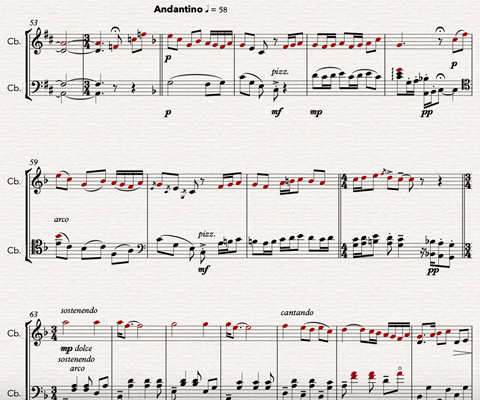
Since both passages share the same thematic material, my intention was to merge them to craft an ambiance where the orchestration is partially drawn from the first section: here, the second double bass assumes the role of the second clarinet and incorporates certain chords from the piano. Meanwhile, the first double bass performs in the middle register, seamlessly transitioning into the second section with the solo of the first violin and progressing to the higher harmonics that can be overlaid at the climactic point of Doretta’s aria.
In the double bass and cello take on the roles of protagonists. The mellow orchestration in ’Bohème’ caresses the voices of the main characters and beautifully captures the French atmosphere. Puccini extensively employs the harp, which imparts a soft, resonant, and open sound, enhancing and uniting the sections at times in a soloistic manner. How can this be recreated?
The use of left-hand pizzicati and double stops is key to this orchestration. The two leading strings never have a moment of rest; even while singing the arias, they must continue to uphold the harmony to maintain the full, rounded sound of the orchestra. For instance, at bar 215 of the Fantasia in the aria ’Che Gelida Manina’, the cello accompaniment is made of light double stops triplets, imitating the harp’s movement, while the double bass takes up the tenor theme at the high octave and sings freely and with excitement, rekindling the momentum that Puccini orchestrated in the score.
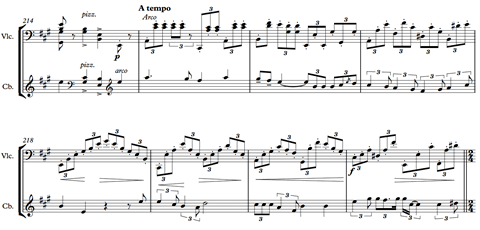

In Colline’s aria ’Vecchia Zimarra’, Puccini opts for a bleak and sparse orchestral palette that intensifies with the character’s words and despair. At the outset, we only encounter pianissimo woodwinds with the harp in the low register, accompanied by violas and cellos marking a rhythmic pattern akin to a clock over the singer’s words.
Here, the cello’s pizzicato continues throughout the aria, changing dynamics and reaching the climax of the aria with bow-played double stops, to which the double bass’s pizzicati are added, imitating the fatal strikes played by the timpani.

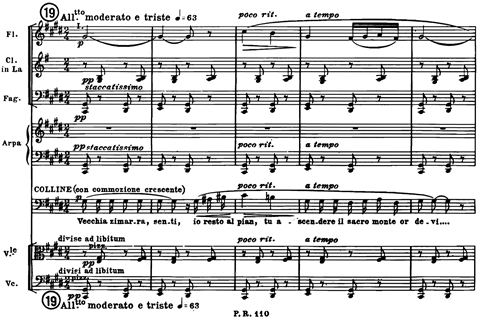
Discover more about the repertoire, instrument combinations and composition tips about orchestration and string repertoire at www.valentinaciardelli.com and www.howimetpuccini.com
Read: How we transcribed an entire opera for violin and piano: violinist Mathieu van Bellen
Read: ‘No one knows how a viola should sound!’: how Mathis Rochat transcribed Rachmaninoff for viola
Read more Featured Stories like this in The Strad Playing Hub
The number one source for playing and teaching books, guides, CDs, calendars and back issues of the magazine.
In The Best of Technique you’ll discover the top playing tips of the world’s leading string players and teachers. It’s packed full of exercises for students, plus examples from the standard repertoire to show you how to integrate the technique into your playing.
The Strad’s Masterclass series brings together the finest string players with some of the greatest string works ever written. Always one of our most popular sections, Masterclass has been an invaluable aid to aspiring soloists, chamber musicians and string teachers since the 1990s.
This year’s calendar celebrates the top instruments played by members of the Australian Chamber Orchestra, Melbourne Symphony, Australian String Quartet and some of the country’s greatest soloists.






































No comments yet